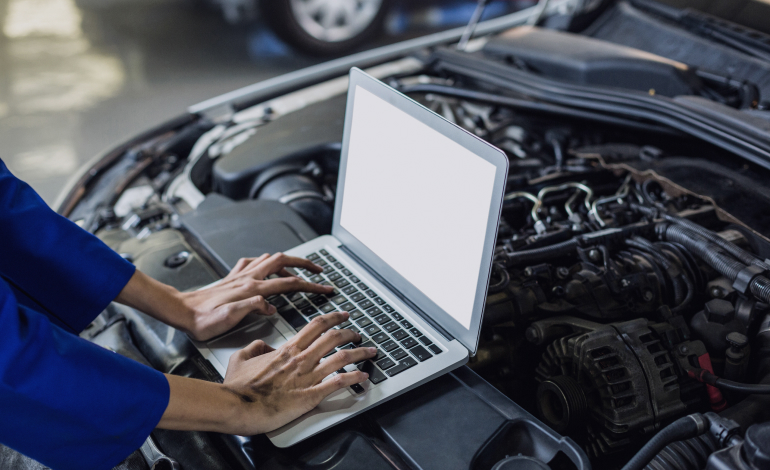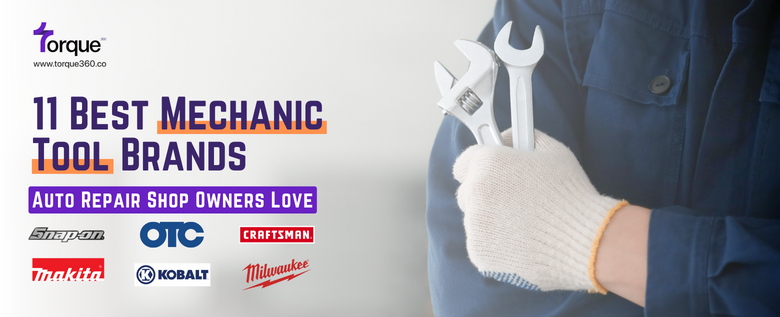A new report published by Prescient & Strategic Intelligence provides a closer look at the auto repair software landscape and trends till 2030. According to P&S Intelligence, the auto repair industry is quickly moving toward digital solutions. This is mainly because of the inherent advantages auto repair software provides.
The Current Situation of Auto Repair Software Industry
2020 to 2030 will be very transformative for the auto repair software industry. 2020 saw a huge shift towards digital inspections in the midst of the pandemic. Understandably, this seems to have sparked a sudden interest in software-based solutions for auto repair businesses around the world.
Customers are now used to having easy and effective solutions within reach. So, to meet this demand, many repair shop owners are rushing to modernize their operations.
Moreover, the auto repair software industry was valued at 18 billion USD in 2019. By 2026, the value may cross 50 billion USD.
But why is everyone suddenly scrambling towards software-based solutions? Let’s find out!
The Driving Forces Behind the Shift
The Smartphone Era
Mobile phones are becoming increasingly common, faster, and affordable every passing day. This is why the new solutions provided are mobile-friendly. P&S report highlights smartphone apps as the main reason for the changing trends. Almost everyone has a smart device these days. As a result, this allows everyone to stay connected on the go.
Live Updates
The modern average customer expects instant updates with timely and quality results. Auto repair software provides that, along with a plethora of other benefits. Furthermore, the report expects smartphone apps for the auto repair industry to become popular drastically within the next decade.
Furthermore, cloud computing is better than ever before. These days it is common to have access to the same data on multiple devices. Consequently, this opens up new avenues for collaborative work. If you have multiple mechanics working on the same project, you can keep all of them updated through a robust software solution. And at the same time, your customers can view the progress at their own pace. Now that is convenient.
Artificial Intelligence
You may have heard the buzzword Artificial Intelligence thrown around a lot these days. Your average smartphone is now powerful enough to run AI algorithms on its own. In addition to that, some manufacturers even add dedicated hardware to process these algorithms. AI provides deep insights into trends and can even predict future trends after enough data collection.
Autonomous Driving
Another big driving force behind the increasing popularity of auto repair shop software is the introduction of self-driving cars. Your average autonomous vehicle is chock full of incredible technology. Mechanics need to have more knowledge about these complex systems, and this creates the need for new repair solutions.
Increased Average Vehicle Age
In North America, the average vehicle age is now almost 12 years! This is an all-time high recorded in this region. Older vehicles require more maintenance. This is another major driver behind the growth of auto repair software. Ageing vehicles indirectly create a need for sophisticated and efficient repair system workflows.
Expected Growth by 2030
P&S Intelligence expects an overall increase of 10.3% in compound annual growth rate (CAGR) for the auto repair software industry. Many repair shop owners love the idea of having one platform that encompasses all their operations.
So, not only does this make management easier, but the idea of automating monotonous everyday tasks is a godsend for many people: Optimizing workflow, improving employee productivity, and keeping customers happy. It’s a win-win situation.
These features attract potential repair shop owners to software solutions. As a result, this creates a need for the development of such solutions. And as competition increases, more and more companies will try to offer the best possible solutions at the cheapest prices. So, customers buy these solutions and demand more. The cycle repeats itself.
Therefore, having an integrated, easy-to-use auto repair shop solution is no longer a luxury; it is more accessible than ever before. In fact, it’s a necessity!
Segmentation in Auto Repair Software Market
The auto repair software market is divided into different categories:
- Vehicle Types
- Passenger Vehicles
- Commercial Vehicles
- Software
- Autonomous Driving
- Infotainment Software
- Safety & Security Software
- Vehicle Management Software
- Applications
- Mobility Systems
- Engine Management Systems
- Regions
- North America
- Latin America
- Europe
- Africa & Middle-East
- Asia Pacific
The passenger vehicle segment dominates the auto repair software vehicle segment by a whopping 80%! However, commercial vehicle repair will grow steadily within the next decade.
One may think that autonomous driving may take up the largest part of the software side of things. However, vehicle management software is expected to lead in the coming years. Furthermore, autonomous driving is predicted to experience steady growth as artificial intelligence, virtual reality, and machine learning technologies mature.
Unsurprisingly, engine management applications will probably lead in the applications segment. This is largely because of the need for more performance without sacrificing too much on efficiency.
The Asia-Pacific (APAC) region is expected to grow quickly within the next decade due to increasing disposable income. People in that region are quickly adapting to new technologies as they become more accessible. Also, the APAC region has the highest automobile sales globally. However, the North American region is forecasted to dominate globally.
Conclusion
The auto repair software industry will be booming within the next decade. More players are entering the market as the industry grows and this completely changes the competitive landscape.
More competition is good for consumers like us. It encourages companies to continuously improve their products within reasonable price ranges. Furthermore, healthy competition indirectly fuels product innovation. Here’s to hoping the next decade will be fruitful for both consumers and service providers!




